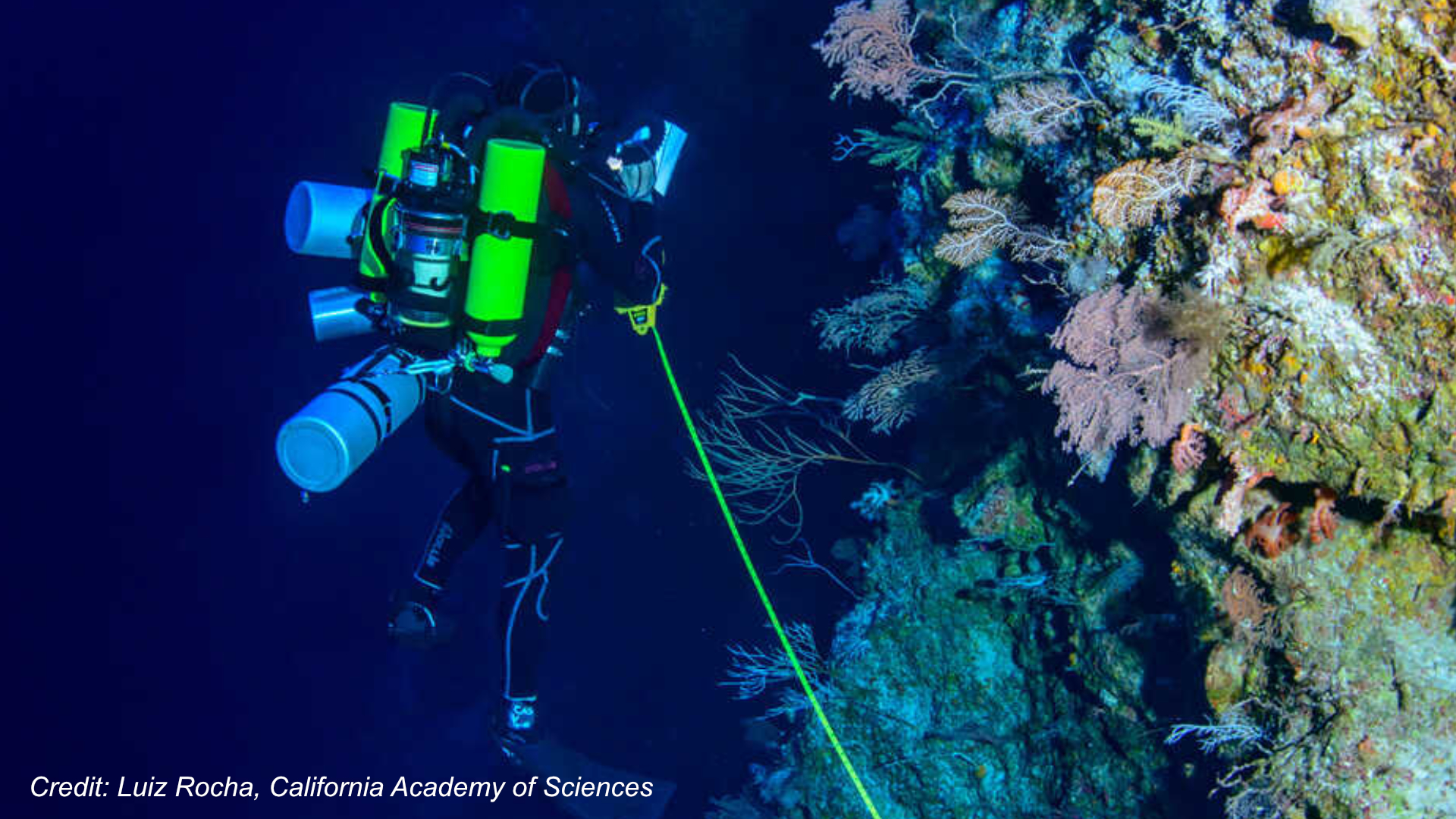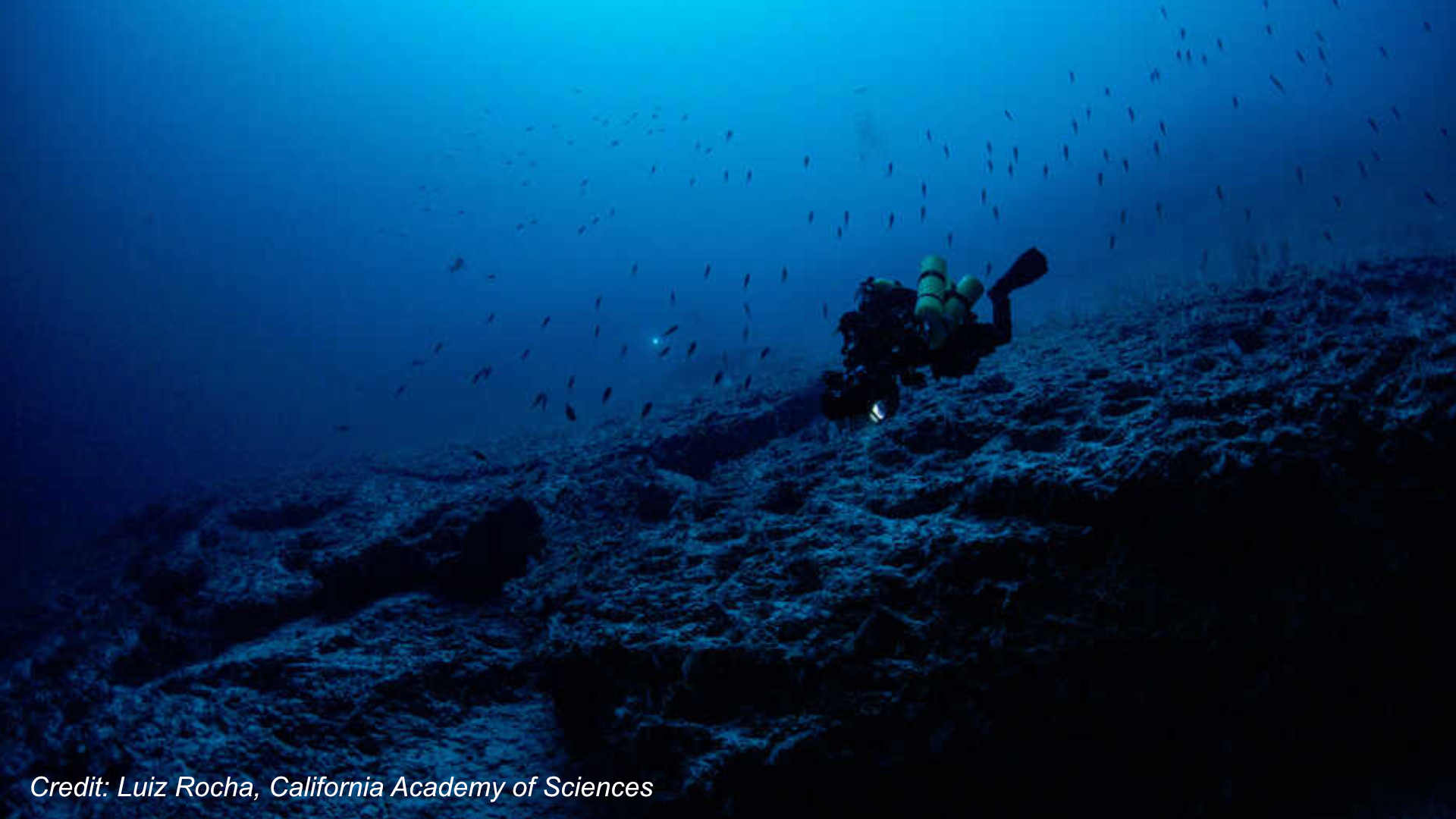Study shows how biodiversity of coral reefs around the world changes with depth

The oceans are a magnificently diverse place that holds many wonders. Thanks to many different technology advancements, we are learning more and more about the oceans. However, scientists actually know more about space than the depths of the oceans. Every year, new species and discoveries are found within our oceans, which makes the marine ornamental aquarium trade exciting and very dynamic.
Recently, the California Academy of Sciences, University of São Paulo, Federal University of Espírito Santo, and the Instituto Nacional da Mata Atlântica performed a research study that looked at the biodiversity of coral reefs around the world. The published paper showed that mesophotic coral reefs function much differently than their shallower counterparts and are unlikely to offer a refuge for shallow water fishes trying to escape climate-change driven warming on the ocean’s surface.

The researchers performed hundreds of dives in the Pacific and Atlantic, which totaled to more than a thousand hours underwater. The goal of these dives was to collect data of what species occur on coral reefs are different ranges of depths. “Our findings reinforce that mesophotic ecosystems are not necessarily a refuge for shallow fishes fleeing warming waters,” says Academy Curator of Ichthyology and Co-director of Hope for Reefs Luis Rocha, PhD. “These deeper reefs appear to be saturated, meaning that most niches where newly arrived species might survive are already filled by species that evolved under the distinct environmental conditions found at depth.”
Coral reefs are very vibrant and are vital to the ecosystem, so understanding their biodiversity is an indicator for health and resilience to stressors like climate change. “Most of our knowledge about biodiversity on coral reefs is based on the shallows,” says study co-lead author Hudson Pinheiro, PhD, who is a biologist at the Center for Marine Biology of the University of São Paulo and an Academy research fellow. “But when we sink a little bit deeper, we see that everything changes. Everything we thought we knew about coral reef assembly rules—the ecological pressures that explain what species or groups of organisms survive and thrive in a given ecosystem—changes with depth.”

“We found that many of the strong influences on these biodiversity patterns that have been identified from studies focusing on shallow waters seem to have much less influence on deeper mesophotic reefs,” says ecologist and co-lead author Chancey MacDonald, PhD, who was an Academy postdoctoral researcher at the time of the study. “This means there is much less variation in the diversity of fishes, regardless of distance from the Coral Triangle, the further down the reef you go. It suggests that the evolutionary and environmental processes that shape reef fish communities may be different for mesophotic coral reefs than the shallow coral reefs we more typically study.”
The team spent countless hours analyzing the statical data to uncover and ensure accuracy of the findings. Due to water conditions and difficulties at great depths, some of the surveys conducted are varied slightly. However, the researchers found that all these difficulties were well worth it, and they were able to get a better understanding of coral reefs and their biodiversity at depths. To learn more, read California Academy of Sciences’ article published on News Wise Study shows how biodiversity of coral reefs around the world changes with depth (newswise.com)